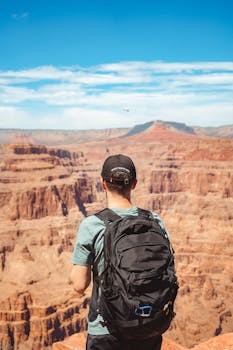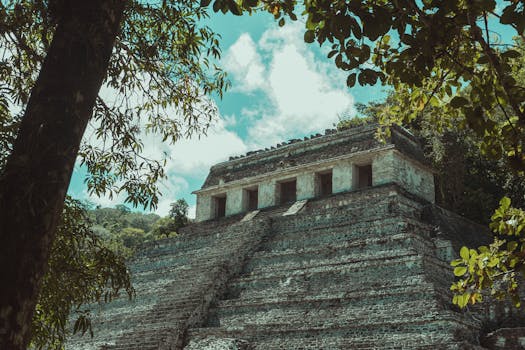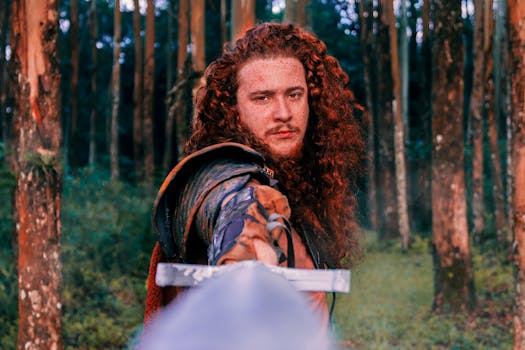Indice
- Introduction: The Exploration of a New World
- Pre-Columbian America: Societies Before Columbus
- Columbus’s Voyages: The Misconceptions and Realities
- The Viking Expeditions: Early European Contact
- The Columbian Exchange: The Impact on Both Worlds
- The Controversies and Theories: Who Discovered America First?
- Legends and Legends: The Myths Surrounding the Discovery
- The Historical Records: Piecing Together the Truth
- Conclusion: Understanding the Multifaceted Discovery of America
Introduction: The Exploration of a New World

The Age of Discovery
The Age of Discovery, which stretched from the 15th to the 17th century, marked a pivotal era in world history. European powers, driven by a quest for new trade routes, resources, and territories, embarked on extensive maritime explorations. This period saw the rise of notable explorers such as Christopher Columbus, Vasco da Gama, and Ferdinand Magellan. Columbus, in particular, is often credited with the “discovery” of America in 1492, though various indigenous cultures had already been thriving for thousands of years prior to his arrival.
Columbus’s Journey
Christopher Columbus, an Italian navigator sponsored by Spain, set sail across the Atlantic in search of a direct pathway to Asia. His first voyage led him to the Bahamas, mistakenly believing he had reached the outskirts of the East Indies. The encounter initiated vast changes, bridging two worlds: one rich in indigenous cultures and another driven by European ambition. Notably, it is essential to recognize that the lands discovered were not uninhabited; various Native American groups flourished across North America, each with its distinct traditions, languages, and societies.
Consequences of Discovery
The consequences of Columbus’s expedition were profound and multifaceted. The meeting of European explorers and Native Americans resulted in significant cultural exchanges but also tragic outcomes, including the spread of diseases that decimated indigenous populations. Furthermore, the discovery led to a wave of colonization, exploitation of resources, and the establishment of European settlements that reshaped the continent forever. Myth and narrative surrounding the “discovery” of America continue to evolve, underlining the importance of revisiting and reassessing historical perspectives to honor the complexities of this significant event.
Pre-Columbian America: Societies Before Columbus

Diverse Cultures and Civilizations
Before Columbus arrived in 1492, the Americas were home to a rich tapestry of cultures and civilizations. Indigenous groups such as the Mayans, Aztecs, and Incas established complex societies with advanced agricultural practices, intricate social hierarchies, and remarkable architectural achievements. The Mayans are particularly noted for their contributions to mathematics, astronomy, and writing, while the Aztecs built grand cities like Tenochtitlán. In North America, tribes such as the Iroquois and the Sioux cultivated unique traditions and governance systems, highlighting the incredible diversity that existed across the continent.
Economies and Trade Networks
Pre-Columbian societies developed varied economic systems based on agriculture, hunting, and trade. The Mississippian culture, for instance, thrived in the southeastern United States, establishing large earthen mounds and a flourishing agricultural economy. These societies participated in extensive trade networks, exchanging goods such as pottery, tools, and textiles. Trade routes linked various tribes and cultures, facilitating not only the exchange of material goods but also ideas, technologies, and cultural practices, providing a sense of interconnectedness across the continent.
Spiritual Beliefs and Social Structures
Spirituality played a vital role in the lives of pre-Columbian peoples, with religious practices deeply intertwined with their daily existence. Many tribes revered nature, seeing the earth, sun, and water as central to their beliefs. Their cosmologies often involved intricate myths and rituals that reflected their connection to the environment. Social structures varied widely, from matriarchal societies like the Iroquois to the hierarchical systems of the Incas, revealing the complexity of governance and community organization in these early civilizations. The legacy of these societies continues to influence contemporary Indigenous cultures in the Americas today.
Columbus’s Voyages: The Misconceptions and Realities

The Myths Surrounding Columbus
Many myths have arisen surrounding the figure of Christopher Columbus and his voyages. A prevalent myth is that Columbus was the first European to discover America. While he is recognized for initiating contact between Europe and the Americas, Norse explorers like Leif Erikson reached North America nearly 500 years earlier. Columbus was also not the first to encounter the indigenous peoples, who had been living on the continent for thousands of years. This myth has contributed to a simplified narrative of exploration that overlooks the rich history of Native American civilizations.
The Reality of Columbus’s Achievements
Columbus’s voyages were significant in the sense that they opened up transatlantic exploration for Europe. His expeditions led to a series of subsequent voyages that resulted in the widespread awareness of the Americas in Europe. The maps of the world changed as Columbus’s reports of new lands sparked the interest of European powers, leading to exploration and colonization. While he did not accomplish his original goal of finding a faster route to Asia, Columbus’s voyages nonetheless had a monumental impact on global history, marking the beginning of an era of exploration and exploitation.
The Consequences for Indigenous Peoples
The arrival of Columbus in the New World had dire consequences for the indigenous populations he encountered. His expeditions initiated a period of colonization that resulted in the exploitation, displacement, and suffering of many Native American tribes. Diseases brought by Europeans decimated populations unaccustomed to such illnesses, causing losses that reshaped entire cultures. Furthermore, the pursuit of gold and resources led to violence and slavery. This reality starkly contrasts the romanticized view of Columbus as a hero, necessitating a more nuanced understanding of his legacy and the lasting impact of his voyages on the Americas and its indigenous peoples.
The Viking Expeditions: Early European Contact

The Norse Explorers
The Viking Age, spanning from the late 8th to the early 11th century, saw Norse seafarers known for their exceptional shipbuilding skills and adventurous spirit embark on daring expeditions across the North Atlantic. Notable figures such as Leif Erikson are credited with being among the first Europeans to reach the shores of North America, specifically an area believed to be present-day Newfoundland, Canada, which they referred to as “Vinland.” Historical sagas recount tales of settlements, resource gatherings, and encounters with Indigenous peoples, showcasing the Vikings’ attempts to establish a foothold in the New World long before Columbus’s expeditions.
The Vinland Settlement
Archaeological discoveries at L’Anse aux Meadows in Newfoundland provide tangible evidence of Viking presence in North America. The site, excavated in the 1960s, revealed the remains of a Norse settlement that dates back to around 1000 AD. This settlement, characterized by its distinctive turf structures, indicates that the Vikings established a base for farming and utilization of local resources, such as timber and fish. The existence of this settlement not only contributes to our understanding of Viking exploration but also suggests that Norse contact with North America was more extensive than previously thought.
Cultural Interactions and Encounters
The Viking expeditions to North America were marked by their limited but significant encounters with Indigenous groups such as the Beothuk. Historical accounts from the sagas illustrate both trade and conflict between the Vikings and Native inhabitants. These interactions included a mix of cooperation and hostility, highlighting the complexities of cross-cultural relationships in this early period of transatlantic exploration. While the Vikings eventually retreated from their North American ventures, their expeditions stand as a testament to the fact that European contact with the Americas predates Columbus, reshaping our understanding of early exploratory history.
The Columbian Exchange: The Impact on Both Worlds

The Exchange of Goods and Ideas
The Columbian Exchange refers to the widespread transfer of plants, animals, culture, human populations, technology, and ideas between the Americas and the Old World following Columbus’s voyages. This exchange had profound impacts on both sides of the Atlantic. European colonizers introduced crops such as wheat, rice, and sugarcane, which transformed agricultural practices in the Americas. In turn, the New World provided a wealth of resources, most notably potatoes, tomatoes, maize, and tobacco, which subsequently enhanced European diets and agricultural productivity, leading to population growth.
Impact on Indigenous Populations
While the Columbian Exchange facilitated the exchange of beneficial crops, it also had devastating effects on Indigenous populations in the Americas. The arrival of Europeans brought diseases such as smallpox, measles, and influenza, to which Native Americans had no immunity. These illnesses decimated indigenous populations, leading to the loss of entire communities and cultures. The socio-political landscape of the Americas was forever altered as the colonizers expanded their territories, often violently displacing the native peoples.
Transformation of Ecosystems
The introduction of new species also dramatically transformed ecosystems on both sides of the Atlantic. European livestock, such as cattle, pigs, and horses, thrived in the Americas, altering the landscape and impacting local wildlife. Conversely, American crops like maize and potatoes were transported to Europe, where they became staples in various diets. This transfer of species catalyzed ecological shifts that would influence agricultural practices and food security for centuries, showcasing the far-reaching consequences of this significant encounter between two worlds.
The Controversies and Theories: Who Discovered America First?
The European Narrative
The narrative of who ‘discovered’ America has largely been dominated by European perspectives, particularly focusing on Christopher Columbus and his voyages. For centuries, Columbus was heralded as the ultimate discoverer of the New World, often overshadowing prior explorations by other cultures. This Eurocentric view has been continually challenged by historians and scholars, leading to a deeper exploration of earlier figures, like the Vikings, who reached the shores of North America almost 500 years prior to Columbus. The promotion of Columbus as the sole discoverer also ignores the vibrant societies and rich histories of the Native Americans who had been living on the continent for millennia before any Europeans arrived.
The Indigenous Lenses
Indigenous perspectives offer a vastly different understanding of the land now known as America. The concept of “discovery” is often seen as an affront, as the Americas were already home to a multitude of tribes and nations with established cultures, languages, and territories. For many Native American groups, the arrival of Europeans did not signify a discovery but rather an invasion that would lead to colonization and destruction of their way of life. Recognition of these views is essential for acknowledging the true complexities of America’s history and the narratives that have been traditionally marginalized or erased.
Theories Beyond Columbus and the Vikings
The debate surrounding who discovered America extends beyond Columbus and the Vikings, inspiring various theories that suggest contact from other groups, including the Polynesians and even ancient Celts. Some researchers point to evidence of pre-Columbian trans-oceanic voyages, suggesting that the Americas may have had visits from these civilizations long before Columbus’s time. Such theories continue to evoke scholarly interest and debate, prompting historians to reassess the timeline of exploration and the interconnectedness of different cultures in shaping the history of the Americas. As more archaeological evidence comes to light, the story of America’s discovery grows increasingly intricate, reflecting a broader narrative of human exploration and interaction.
Legends and Legends: The Myths Surrounding the Discovery
The Legend of the Golden City
One of the most captivating legends that arose after Columbus’s expeditions was the tale of a golden city, often referred to as “El Dorado.” This myth suggested the existence of a fabulously wealthy city somewhere in the Americas, often associated with the lands beyond the Andes or hidden in the vast jungles of Central and South America. The story fueled numerous expeditions by Spanish conquistadors who sought the riches of this mythical place, leading to further exploration and the eventual conquest of indigenous civilizations. While El Dorado was never found, the legend highlighted the European obsession with wealth and discovery, profoundly impacting the course of colonization in the Americas.
The Myth of the ‘Empty Lands’
Another pervasive myth surrounding the “discovery” of America is the idea that the continent was largely uninhabited and ripe for colonization. This concept perpetuated the belief that Europeans were “civilizing” barren lands, ignoring the vibrant and populated societies that thrived before their arrival. In reality, extensive networks of indigenous nations existed, each with rich cultures, governance systems, and land stewardship practices. This myth served as a justification for colonization, as it downplayed the consequences of European actions on Native populations, effectively erasing their histories and contributions from the broader narrative of American discovery.
The Tale of the Noble Savage
The notion of the “noble savage” emerged as a romanticized view of Native Americans in the wake of European exploration. This myth depicted Indigenous peoples as innocent, untainted by civilization—living in harmony with nature and embodying idealized virtues. While this image aimed to celebrate and acknowledge Native cultures, it also reductively oversimplified their lives, failing to recognize the complexities, struggles, and diversity of indigenous societies. This legend is often contrasted with the harsh realities faced by Native Americans due to colonization, revealing the contradictions inherent in colonial attitudes, which sought both to romanticize and demonize indigenous peoples simultaneously.
The Historical Records: Piecing Together the Truth

Primary Sources and Artifacts
Historical records and artifacts serve as crucial evidence that help us reconstruct the story of America’s discovery. Primary sources, including journals, maps, and letters from explorers like Columbus and his contemporaries, provide firsthand accounts of their journeys and interactions with indigenous peoples. Additionally, artifacts unearthed from archaeological sites, such as tools, pottery, and remnants of settlements, offer tangible insights into the lives of pre-Columbian societies. These findings not only shed light on the practices and cultures of Native Americans but also help contextualize the European perspectives that dominated historical narratives. By analyzing these diverse sources, historians can piece together a more balanced account of America’s past, recognizing the influences and implications that surround early exploration.
Documenting Indigenous Perspectives
Indigenous oral histories and traditions are essential for documenting the experiences of Native American communities before and after European contact. Many Indigenous cultures have rich oral traditions, passing down stories of their ancestors and their encounters with Europeans. These narratives challenge the dominant Eurocentric viewpoints and emphasize the impact of colonization on their societies. While often overlooked in mainstream histories, these documents—both oral and written—provide vital context for understanding the complexities of relationships between Indigenous peoples and European explorers. By integrating indigenous perspectives into historical records, we can gain a deeper appreciation for the cultural resilience and adaptation of Native Americans amid the disruptions caused by colonialism.
The Role of Evolving Historical Narratives
As new discoveries are made and perspectives shift, the historical narratives surrounding America’s discovery continue to evolve. Scholars and institutions are increasingly recognizing the need to address and rectify biases in previous accounts. This evolution involves not only reevaluating the contributions of figures like Columbus and Leif Erikson but also amplifying the voices of Indigenous peoples whose histories have long been marginalized. Bringing together a diversity of sources allows for a more nuanced understanding of America’s past, promoting a dialogue that acknowledges the complexity of human interactions across cultures. This ongoing revision of history encourages a collective reckoning with the legacies of colonization and a commitment to honor the full spectrum of experiences that shape the present-day United States.
Conclusion: Understanding the Multifaceted Discovery of America
The Complexity of Discovery
The story of America’s discovery transcends a simplistic narrative of exploration and conquest. It is steeped in a complex history involving various cultures, myths, and perspectives. While Christopher Columbus is often credited with the “discovery” of America, much of the land was already inhabited by diverse indigenous groups with rich histories and cultures. Understanding America’s discovery requires recognizing the contributions of these Native societies and their experiences before and after European contact. The term “discovery” itself is misleading since it implies a vacuum—a blank slate devoid of people and culture—when in fact, the Americas were populated and vibrant long before any European arrived.
Revisiting Narratives and Myths
The myths that surround the discovery of America have been deeply ingrained in historical narratives, often overshadowing the significant impact of European colonization on indigenous populations. Concepts such as “El Dorado” and the “noble savage” not only distorted perspectives on Native American cultures but also justified the exploitation and colonization that followed. As we critically reassess these narratives, it is imperative to dismantle the glorified myths of exploration and recognize the consequences they fostered. This examination encourages a more inclusive historiography that honors the resilience and richness of indigenous cultures while emphasizing the tragedies and injustices wrought by colonial ambitions.
The Path Forward
As we engage with the multifaceted story of American discovery, there is an urgent need for ongoing dialogue and scholarship that embraces diverse voices and perspectives. Efforts to document Indigenous histories and experiences provide valuable insights that can reshape our understanding of the past. By fostering an inclusive approach to American history, we can better recognize the interconnections that define the relationships between cultures throughout time. Acknowledging and respecting the complex legacy of America’s discovery fosters reconciliation and understanding, allowing us to move forward together with a more nuanced appreciation of our shared human experience.




